Have you ever wondered why the monstera leaves curl on your beloved Monstera plant? It's a mystery that has left many plant enthusiasts scratching their heads. But fear not, we're here to unravel this enigma and help you understand the causes and solutions to Monstera leaf curl. By the end of this blog post, you'll be equipped with the knowledge to tackle this issue and ensure your Monstera plant thrives.
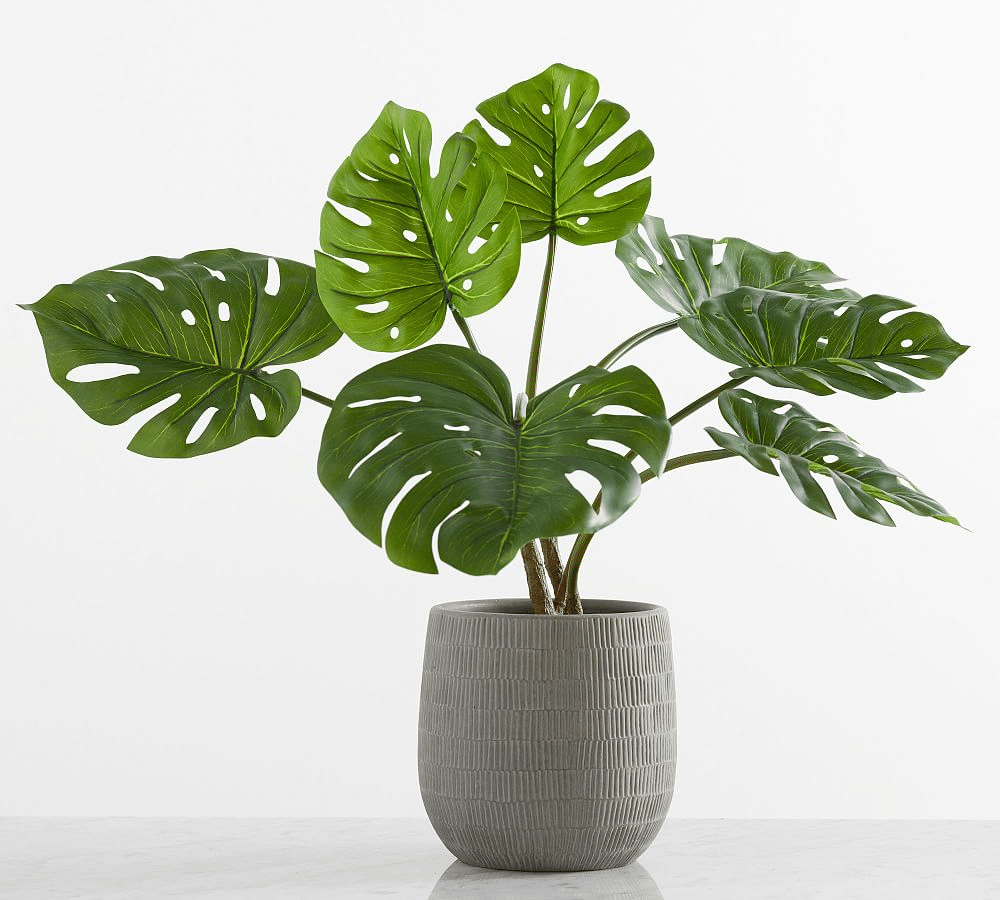
In this journey of discovery, we'll delve into the different types of monstera leaves curling, the common causes behind this phenomenon, and the steps you can take to revive your curled Monstera leaves. So roll up your sleeves and join us as we explore the fascinating world of Monstera plant care.
Short Summary
Identify causes and solutions for Monstera leaf curl.
Monitor soil moisture, humidity levels, light/temperature conditions & nutrient deficiencies to prevent curling leaves.
Proper potting & drainage, regular pruning/inspection and monitoring environmental factors are essential care tips for a healthy Monstera plant.
Identifying Monstera Leaf Curl
Monstera leaves can curl for a variety of reasons, and understanding the type of curl can help you identify the underlying issue. From dehydration to heat stress, each curling pattern provides valuable clues to restore your plant's health.
In this section, we'll discuss the different types of curling leaves and what they indicate, so you can take the necessary steps to bring your Monstera plant back to its full glory. We'll be exploring inward curling leaves, downward curling leaves, and crinkled Monstera leaves, each with their unique set of causes and recommended courses of action.
Armed with this knowledge, you'll be well-prepared to tackle any Monstera leaf curl issue that comes your way.
Inward Curling Leaves

Inward curling leaves can be quite distressing for Monstera plant owners. Various factors, such as underwatering, overwatering, low humidity, lack of nutrients, or insufficient water absorption, can cause Monstera leaves to curl inwards. Recognizing these signs early can help you address the issue and prevent further damage to your plant.
To tackle inward curling leaves, it's crucial to adjust your watering schedule. Increasing the frequency of your watering can help alleviate this issue and restore your plant's health. Keep a close eye on your plant and ensure it receives the proper care it needs to flourish.
Downward Curling Leaves

On the other hand, downward curling leaves are usually a sign that your Monstera plant is thirsty or dry. This can be caused by underwatering, low humidity, or other factors such as overwatering, pests, excessive sun exposure, heat stress, and a lack of phosphorus. Identifying the cause is the key to solving this issue.
To revive your Monstera's downward curling leaves, you'll need to adjust your watering practices, modify light and temperature conditions, increase humidity, and fertilize and amend the soil. With the right care and attention, your Monstera plant will bounce back and continue to grow beautifully.
Crinkled Monstera Leaves
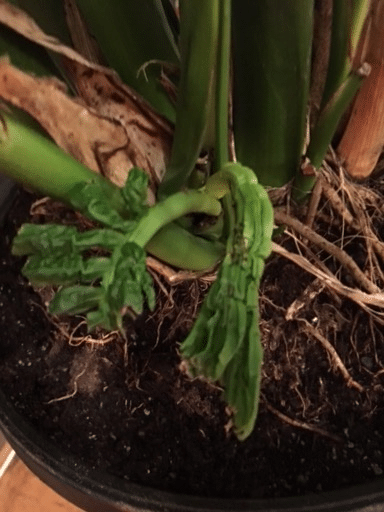
Crinkled Monstera leaves are another issue that can leave plant owners concerned. Underwatering or low humidity are the main culprits behind this phenomenon. Your Monstera plant, native to tropical rainforests, thrives in a humid environment, and maintaining optimal humidity levels is essential for its well-being.
To address crinkled Monstera leaves, you can mist the leaves daily or place the pot on a pebble tray to increase humidity. Ensuring the humidity levels stay within the optimal range of 60-80% will help your Monstera plant flourish and prevent its leaves from becoming crinkled.
Common Causes of Monstera Leaves Curling
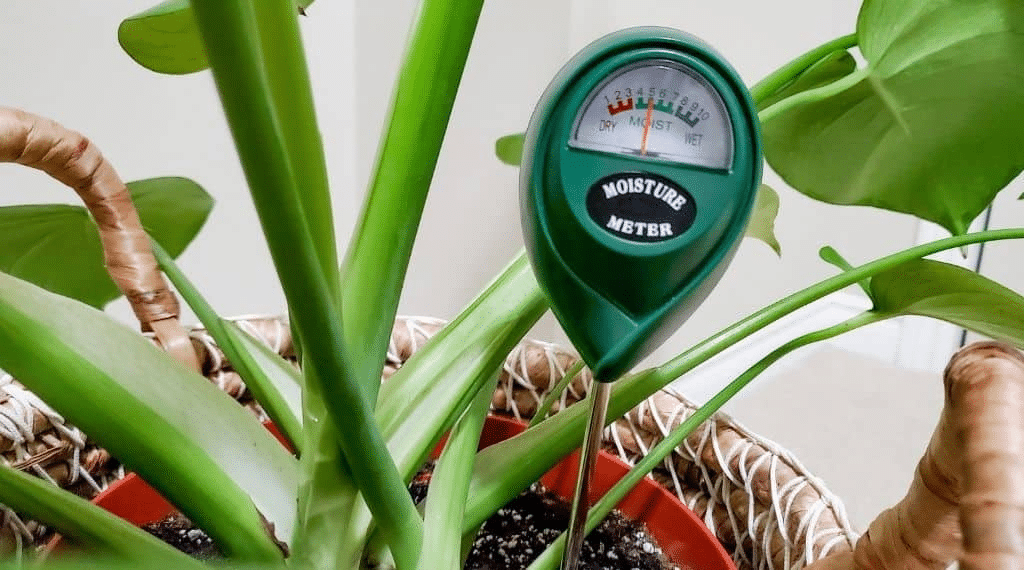
Now that we've identified the different types of curling leaves, let's take a closer look at the common causes behind this issue.
Inadequate watering, insufficient lighting and temperature, low humidity, nutrient deficiencies, soil compaction, and pest infestations can all contribute to Monstera leaves curling. By understanding these causes, you'll be better equipped to address the problem and help your Monstera plant thrive.
In the following subsections, we'll delve deeper into each common cause of Monstera leaf curling, providing valuable insights and solutions to ensure your plant remains healthy and vibrant.
Watering Issues
Watering issues are a common cause of Monstera leaf curl. Overwatering can lead to root rot, while underwatering can cause dehydration and curling of the leaves. To identify and address watering issues, it's essential to monitor your plant's soil moisture.
A moisture meter can be an invaluable tool for determining if your plant needs watering or if there are drainage issues. It's also vital to ensure your pot has drainage holes at the bottom, allowing excess water to escape and preventing root rot.
By keeping a close eye on your plant's watering needs and ensuring proper drainage, you can prevent watering issues and maintain your Monstera's health.
Light and Temperature
Light and temperature play a crucial role in your Monstera plant's well-being. Cold drafts, excessively high temperatures near radiators or fireplaces, excessive direct sunlight, low humidity, heat stress, and temperature shocks can all contribute to Monstera leaves curling.
To prevent curling due to light and temperature issues, consider moving your plant away from direct sunlight or using a sheer curtain to filter the light. Additionally, maintain the temperature of your plant between 10 and 30°C to avoid leaf curling caused by heat stress.
By monitoring and adjusting light and temperature conditions, you can ensure your Monstera plant remains healthy and vibrant.
Humidity Levels
Humidity levels are another critical factor in Monstera plant care. Monstera plants thrive best when the humidity is between 60-80%. Low humidity levels can cause leaves to curl, so it's essential to maintain the appropriate humidity for your plant.
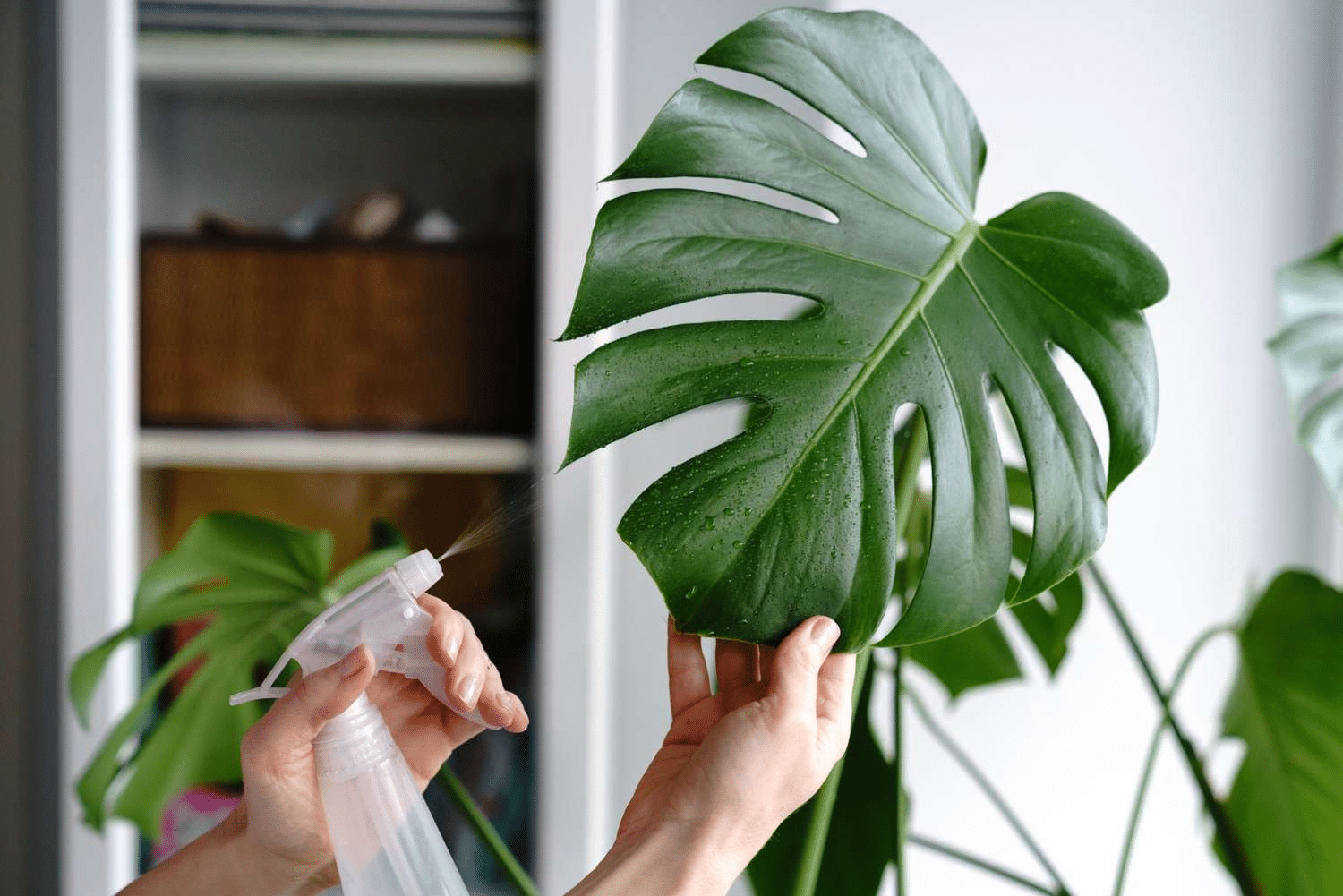
To increase humidity levels for your Monstera plant, consider using a humidifier, relocating the plant to a steamy bathroom, grouping it with other plants, or setting up a humidity tray. By maintaining optimal humidity levels, you can ensure your Monstera plant stays healthy and free from curled leaves.
Nutrient Deficiencies
Nutrient deficiencies can also cause Monstera leaves to curl. Yellowing of the leaves, browning on the edges, and stunted growth during the growing season are all signs of nutrient deficiencies in Monstera plants. Inadequate nutrients can lead to leaves curling under and discoloration, especially in the case of phosphorus deficiency.

To address nutrient deficiencies, consider using a gentle liquid fertilizer regularly. Make sure to follow the instructions on the fertilizer packaging and, if necessary, conduct a soil test before fertilizing to identify any nutrient issues.
Soil Compaction and Root Issues
Compacted soil and wrapped roots can lead to dryness and overwatering, resulting in curled leaves and brown spots. Ensuring your Monstera plant has healthy soil and roots is essential for preventing leaf curling issues.
To address soil compaction and root issues, repot your Monstera into new, well-aerated soil in a clean container with drainage that is 2-3 inches larger than the root ball. By providing your plant with fresh soil and ample space for root growth, you can help it thrive and prevent curled leaves.
Pest Problems
Pest infestations can also cause Monstera leaf curl. Aphids, spider mites, and thrips are known to have the potential to cause Monstera leaf curl, as they suck the nutrient-rich sap out of the leaves. Early detection and intervention are essential to prevent further damage and maintain the health of your plant.
To treat pest problems, consider using neem oil and insecticidal soap. Monitor your plant for a few weeks after application to ensure the problem is completely resolved. By keeping a close eye on your Monstera plant and addressing pest issues promptly, you can ensure its continued health and well-being.
Reviving Your Curled Monstera Leaves
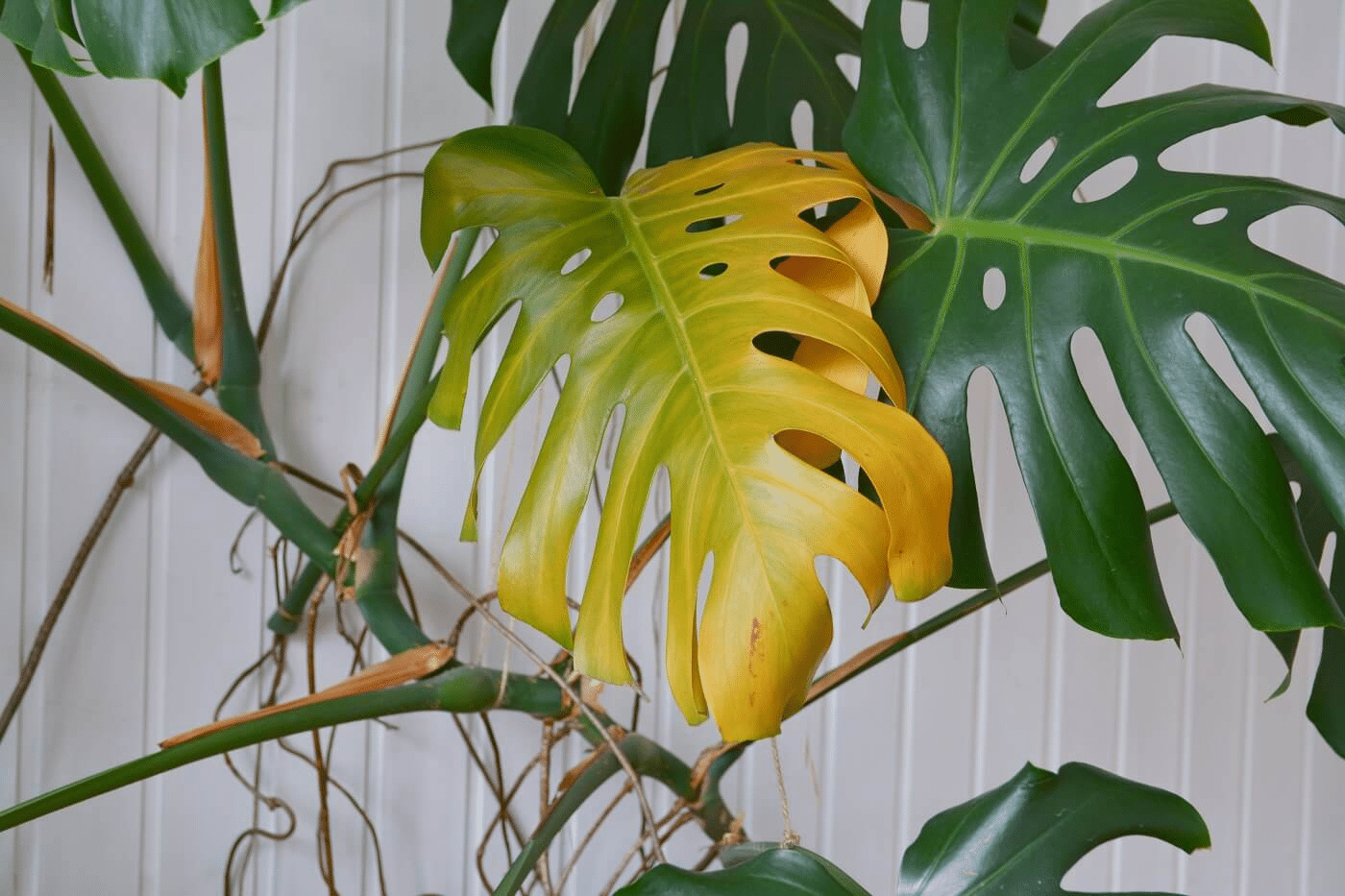
Now that we've discussed the common causes of Monstera leaf curl, it's time to focus on reviving your curled leaves. By addressing the underlying issues and providing your plant with the proper care, you can bring your Monstera plant back to life and ensure it continues to grow and thrive.
In this section, we'll explore specific solutions for adjusting watering practices, modifying light and temperature conditions, enhancing humidity, and fertilizing and soil amendments. With these tips and tricks, you'll be well on your way to reviving your curled Monstera leaves and enjoying a healthy, vibrant plant.
Adjusting Watering Practices
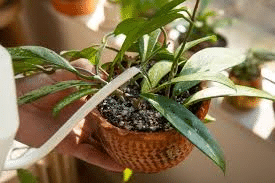
Proper watering practices are crucial for maintaining the health of your Monstera plant. To adjust your watering practices, use a moisture meter to monitor the soil moisture and determine if your plant needs watering or if there are drainage issues.
Ensure your pot has drainage holes at the bottom, allowing excess water to escape and preventing root rot. By keeping a close eye on your plant's watering needs and ensuring proper drainage, you can prevent watering issues and maintain your Monstera's health.
Modifying Light and Temperature Conditions
Light and temperature play a vital role in your Monstera plant's well-being. To modify light and temperature conditions, consider moving your plant away from direct sunlight or using a sheer curtain to filter the light. Maintaining the temperature of your plant between 10 and 30°C will also help avoid leaf curling caused by heat stress.
By monitoring and adjusting light and temperature conditions, you can ensure your Monstera plant remains healthy and vibrant. Providing your plant with the optimal environment will help prevent leaf curling and promote lush, beautiful growth.
Enhancing Humidity
Humidity is another critical factor in Monstera plant care. To enhance humidity, consider misting the leaves daily or placing the plant on a water or pebble tray. Ensuring the humidity levels stay within the optimal range of 60-80% will help your Monstera plant flourish and prevent its leaves from curling.
By maintaining the appropriate humidity levels, you can ensure your Monstera plant stays healthy and free from curled leaves. Proper humidity will also promote lush, vibrant growth, making your Monstera plant a stunning addition to your home or office.
Fertilizing and Soil Amendments
Fertilization and soil amendments are essential aspects of Monstera plant care. To address nutrient deficiencies and improve root growth, consider using a balanced fertilizer every other week, at half or less than the recommended dose.
In addition to fertilization, soil amendments such as banana peel, coffee grounds, and eggshell can be blended with water to create a nutrient-rich mixture that will help your plants grow better. By providing your Monstera plant with the necessary nutrients and amending the soil, you can ensure its continued health and well-being.
Monstera Plant Care Essentials
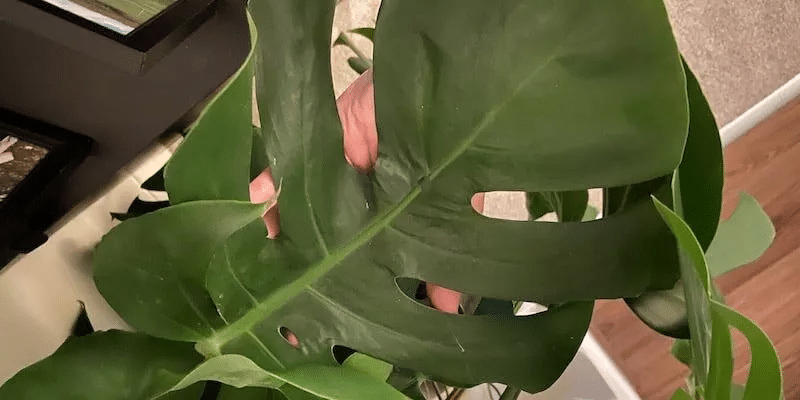
Proper care for your Monstera plant goes beyond addressing curled leaves. In this section, we'll explore the essential aspects of Monstera plant care, including proper potting and drainage, regular pruning and inspection, and monitoring environmental factors. By understanding and implementing these care essentials, you can ensure your Monstera plant remains healthy and vibrant for years to come.
Throughout this section, we'll provide specific care tips and techniques to help you maintain the optimal environment for your Monstera plant. By following these guidelines, you'll not only prevent curled leaves, but also promote lush, beautiful growth that makes your Monstera plant a stunning addition to your home or office.
Proper Potting and Drainage
Proper potting and drainage are crucial for Monstera plant care. The right soil mix provides your plant with the necessary nutrition, moisture, and oxygen, while proper drainage prevents root rot and other issues related to overwatering.
Select a pot with drainage holes and utilize a well-draining potting mix for optimal potting and drainage. By ensuring proper potting and drainage, you can prevent many issues related to Monstera plant care, including curled leaves and root rot.
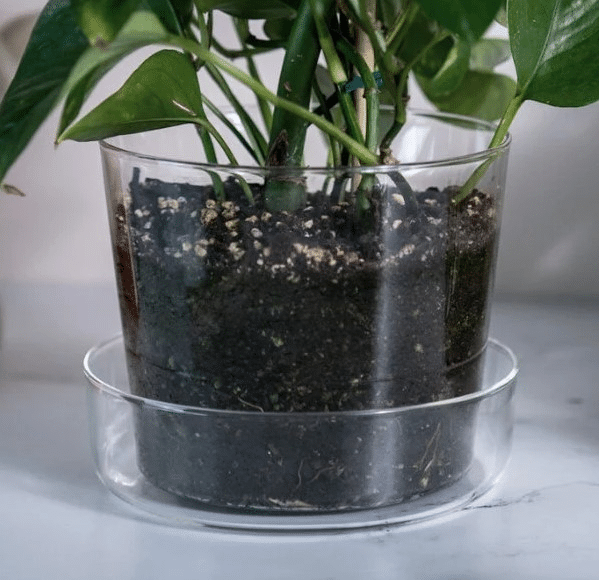
Regular Pruning and Inspection
Regular pruning and inspection are essential aspects of Monstera plant care. Pruning helps your plant focus its energy on healthy growth, while inspection allows you to identify pests and diseases early on, preventing further damage.
Inspect your plant regularly for signs of pests or disease, and prune away any dead or damaged leaves. By conducting regular pruning and inspection, you can ensure your Monstera plant remains healthy and vibrant, free from curled leaves and other issues.
Monitoring Environmental Factors
Monitoring environmental factors such as light, temperature, humidity, and water is crucial for ensuring optimal growth for your Monstera plant. Keep a close eye on these factors and adjust them as needed to promote a healthy, thriving plant.
Summary
Throughout this blog post, we've explored the various causes and solutions for Monstera leaf curl. By understanding the different types of curling leaves and addressing the underlying issues, you can ensure your Monstera plant remains healthy and vibrant. Proper care, including potting and drainage, regular pruning and inspection, and monitoring environmental factors, is essential for the well-being of your Monstera plant.
With the knowledge and tips provided in this post, you're now equipped to tackle any Monstera leaf curl issue that comes your way. So roll up your sleeves, give your Monstera plant the care it deserves, and watch it flourish into a stunning, vibrant addition to your home or office.
Frequently Asked Questions
How do you fix monstera leaves curling?
To repair your Monstera leaves curling, try following these steps: provide thorough waterings when the soil feels dry to the touch; fertilize regularly with a balanced liquid fertilizer; avoid direct sunlight and cold or hot drafts; and check for pests.
With a bit of care, you should have healthier-looking leaves in no time!
Will curled monstera leaves uncurl?
Yes, Monstera leaves can uncurl. In most cases, the cause of the curling is related to insufficient water, over-fertilization, and new growth. To fix these issues, providing proper care to the plant should result in the leaves uncurling.
Do monstera leaves curl when overwatering?
Yes, monstera leaves will curl when overwatered. When too much water is added to the soil, it causes root rot, which in turn affects the plant's ability to absorb nutrients and moisture.
This is why it's important to pay attention to your watering routine and ensure you're not over-watering your Monstera plant.
What do overwatered monstera leaves look like?
Overwatered monstera leaves will look limp, dark-colored and soft. You'll likely notice a decrease in the plant's health as its leaves start to brown and droop. Act fast and you might be able to save your beloved monster!
What causes plant leaves to curl up?
High temperature and insufficient air circulation can cause plant leaves to curl up. If the temperature in your room is constantly above 80 degrees F, then it's likely causing your plants stress.
To reduce the heat stress, make sure to use good airflow with fans or windows to bring in cooler air from outside.

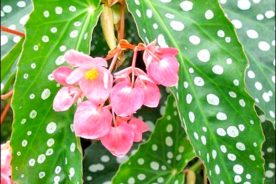
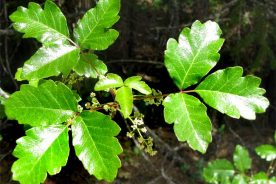


No Comments